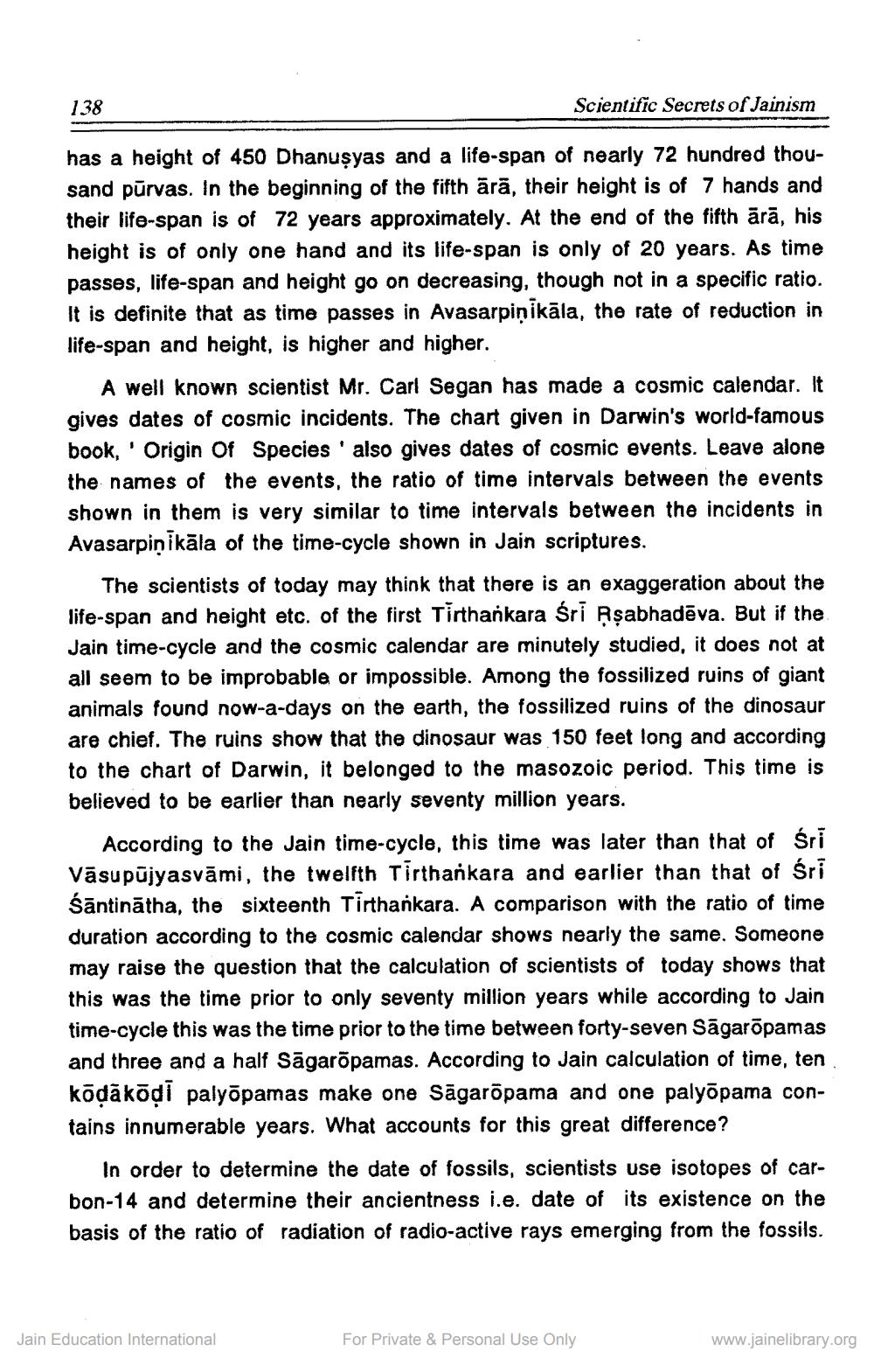________________
138
Scientific Secrets of Jainism
has a height of 450 Dhanuşyas and a life-span of nearly 72 hundred thousand pūrvas. In the beginning of the fifth ārā, their height is of 7 hands and their life-span is of 72 years approximately. At the end of the fifth ārā, his height is of only one hand and its life-span is only of 20 years. As time passes, life-span and height go on decreasing, though not in a specific ratio. It is definite that as time passes in Avasarpiņikāla, the rate of reduction in life-span and height, is higher and higher.
A well known scientist Mr. Carl Segan has made a cosmic calendar. It gives dates of cosmic incidents. The chart given in Darwin's world-famous book, 'Origin Of Species ' also gives dates of cosmic events. Leave alone the names of the events, the ratio of time intervals between the events shown in them is very similar to time intervals between the incidents in Avasarpiņikāla of the time-cycle shown in Jain scriptures.
The scientists of today may think that there is an exaggeration about the life-span and height etc. of the first Tirthankara śri Aşabhadēva. But if the Jain time-cycle and the cosmic calendar are minutely studied, it does not at all seem to be improbable or impossible. Among the fossilized ruins of giant animals found now-a-days on the earth, the fossilized ruins of the dinosaur are chief. The ruins show that the dinosaur was 150 feet long and according to the chart of Darwin, it belonged to the masozoic period. This time is believed to be earlier than nearly seventy million years.
According to the Jain time-cycle, this time was later than that of śri Vāsupūjyasvāmi, the twelfth Tirthankara and earlier than that of śri śāntinātha, the sixteenth Tirthankara. A comparison with the ratio of time duration according to the cosmic calendar shows nearly the same. Someone may raise the question that the calculation of scientists of today shows that this was the time prior to only seventy million years while according to Jain time-cycle this was the time prior to the time between forty-seven Sāgarōpamas and three and a half Sāgaropamas. According to Jain calculation of time, ten kõđãkõdi palyopamas make one Sāgarōpama and one palyāpama contains innumerable years. What accounts for this great difference?
In order to determine the date of fossils, scientists use isotopes of carbon-14 and determine their ancientness i.e. date of its existence on the basis of the ratio of radiation of radio-active rays emerging from the fossils.
Jain Education International
For Private & Personal Use Only
www.jainelibrary.org




